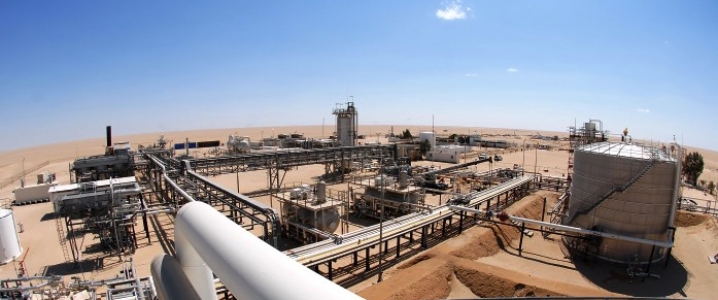Since the ousting and subsequent killing of Muammar Gaddafi in 2011, Libya’s oil production has remained below capacity. With the lingering effects of civil war, the country which is a member of OPEC has struggled to boost oil production in its major oil fields. Despite registering an increased average output of 828,000 barrels daily in 2017, Libya has failed to attain the production levels realized during Gaddafi’s reign.
Libya has the largest proven oil reserves in Africa with an estimated 47.1 billion barrels in reserves. The country has also been ranked 9th in the world In terms of existing oil reserves. Despite this, Nigeria is currently the leading producer of oil in Africa.
Back in the 1970’s, Libya was producing 3 million barrels of oil per day. This identified Libya as a key supplier of sweet crude oil to Europe. At the time of Gaddafi’s death, the country’s crude production sank to about 1.6 million barrels of oil per day. Currently, Libya is struggling to maintain a production level of 1 million barrels per day.
Build Up to Reduced Oil Production in Libya
Much of the slowdown in daily oil production in Libya relates to the aftermath of the 2011 rebel uprising backed by NATO. With Gaddafi toppled, the fragmentation of power in the country and the use of oil production facilities as bargaining chips created an adverse environment for oil production.
With the lawlessness and instability that ensued after Gaddafi’s fall, the nation experienced an shutdown in oil production. Outages in the giant Sharara and El Feel oil fields have weighed on oil production and exports ever since.
Activities by rebel groups also played a big role in derailing oil production in Libya. With the fragmentation of power, different armed groups cut off production in major oil fields and ports.
According to Reuters, the haphazard shutdown of oil wells led to reduced oil pressure resulting in further outages.
Current Instability Issues Hampering Oil Production
While the security situation has improved somewhat since 2016, oil production in Libya continues to face challenges.
The combination of financial/economic headwinds, armed groups seeking the release of jailed members and political developments are some of the current factors affecting oil production. With dwindling oil revenues and limited authority over armed groups, the Government of National Accord (GNA) in Tripoli lacks the capacity to prevent illegal shutdowns and finance operations related to production.
In this regard, rebel groups within and outside the capital still have the ability to shut down production remotely or at the terminals. For instance armed groups near the western town of Zintan have occasionally disrupted production at the Sharara oil field by cutting off the pipeline leading to the Mediterranean coast. Related: The World’s Most Expensive Power Project
Financial constraints faced by the government and the National Oil Corporation (NOC) have also contributed to a slowdown in oil production. While the NOC is grappling with a delayed reimbursement of funds, financial constraints have made it difficult for the government to pay the Petroleum Facilities Guards (PFG).
As recent as February 2018, a protest by the PFG at the El Feel oil field culminated in another production outage. The NOC evacuated its workers and closed the facility when a group of the PFG stormed the administration blocks and threatened workers in addition to vandalising records and firing in the air.
Political tensions in the eastern part of Libya continue to derail production in the region that holds most of the country’s oil wealth. Armed factions in the region are opposing the government’s distribution of oil income and are unlikely to give up their armed struggle in the near future.
The Way Forward
Ultimately, oil production growth in Libya can’t be achieved unless interregional relations and security improve.
The NOC has already expressed the intention of boosting Libya’s oil production to 2.2 million barrels per day by 2023. At the moment, it is unlikely that it can do so without the help of foreign oil companies.
Mixed enthusiasm among oil companies suggests that Libya is still a long way from reaching its ambitious production target and might have to do a lot more to woo the oil majors.
By Arianna Nunez for Oilprice.com
More Top Reads From Oilprice.com:
- Russia Wants To Drop Dollar For Oil Payments
- Offshore Rig Builders Face New Reality
- Are Energy Investors Overlooking Master Limited Partnerships?


















